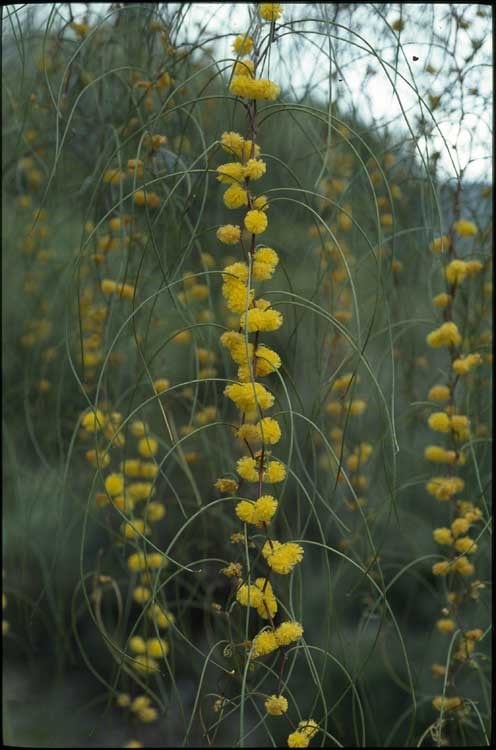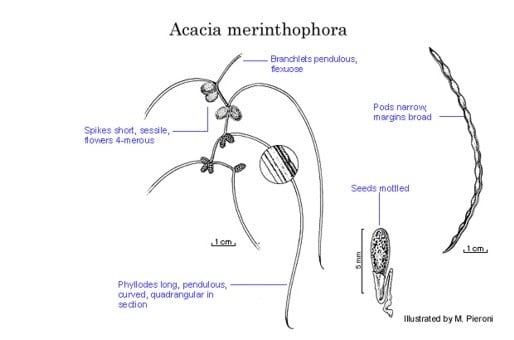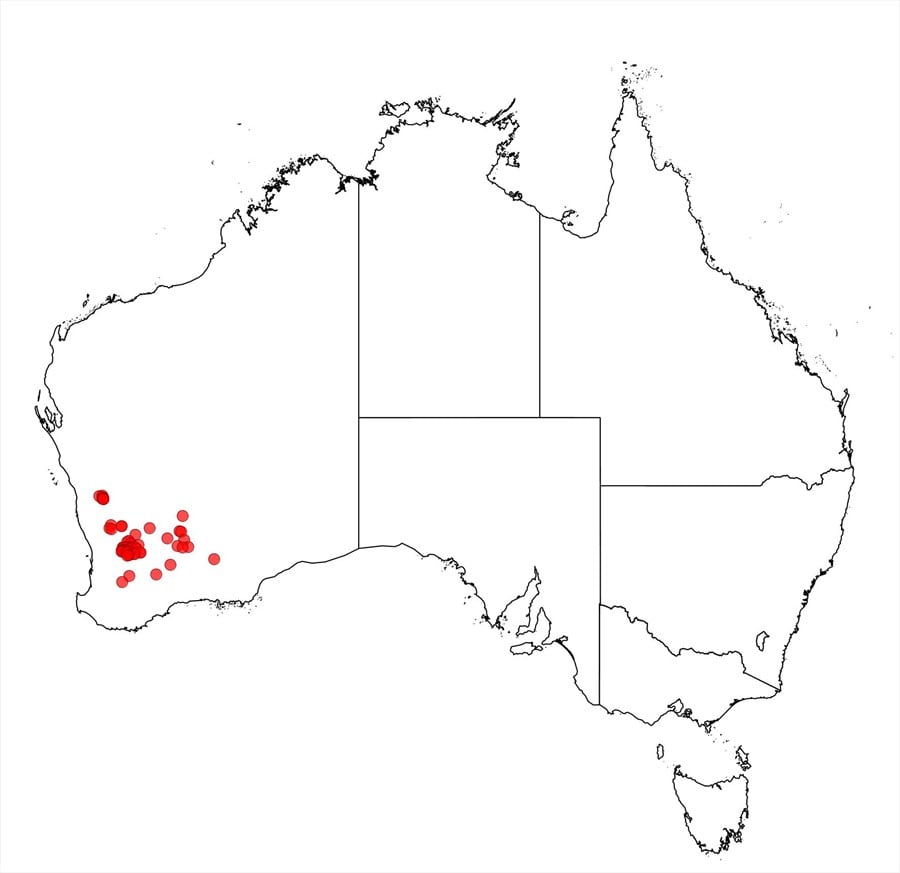Acacia merinthophora E.Pritz.
WATTLE
Acacias of Australia
Family
Fabaceae
Distribution
Occurs from Cadoux S to Bruce Rock with disjunct occurrences at Perenjori and North Ironcap (75 km E of Hyden), southern W.A.
Description
Shrub or small tree to 4 m high, openly branching. Branchlets pendulous, flexuose, ribbed, sericeous between ribs. Phyllodes sessile, strongly incurved, quadrangular in section, 7–25 cm long, ±1 mm wide, attenuate apically, yellow-green, glabrous, with 4 nerves (one at each angle separated on each side by a fine darker furrow); gland basal, swollen. Inflorescences simple, 1–3 per axil; heads subsessile, obloid to short-cylindrical, 6–10 mm long, 5–10 mm diam., subdense, golden. Flowers 4-merous; sepals united. Pods linear, ±constricted between seeds, ?straight, to 13 cm long, 2–2.5 mm wide, firmly chartaceous, antrorsely strigulose; margins broad, yellow. Seeds longitudinal, oblong-elliptic, 3–4 mm long, shiny, mottled brown and cream with a dark brown peripheral line; aril terminal, creamy yellow.
Habitat
Grows mostly in sand in tall shrubland.
Specimens
W.A.: 16.9 km S of Cunderdin towards Quairading, B.R.Maslin 1709 (AD, MEL, NSW, PERTH); 14.5 km S of Perenjori towards Wubin, B.R.Maslin 3364 (B, BRI, CANB, DNA, NY, PERTH); 2 km S of Ironcap, K.Newbey 5208 (PERTH).
Notes
Specimens of A. merinthophora from near the type locality bear more robust phyllodes.
Closely related to both A. tratmaniana and A. filifolia, both of which have erect, non-flexuose (sometimes slightly flexuose in A. filifolia) branchlets and supra-basal glands; in addition A. tratmaniana has ±globular flower-heads. Also similar in habit to A. anfractuosa and A. sciophanes (both in sect. Plurinerves); has been confused with A. arcuatilis.
FOA Reference
Data derived from Flora of Australia Volumes 11A (2001), 11B (2001) and 12 (1998), products of ABRS, ©Commonwealth of Australia
Author
A.R.Chapman, B.R.Maslin
This identification key and fact sheets are available as a mobile application:
URL: https://apps.lucidcentral.org/wattle/
© Copyright 2018. All rights reserved.











